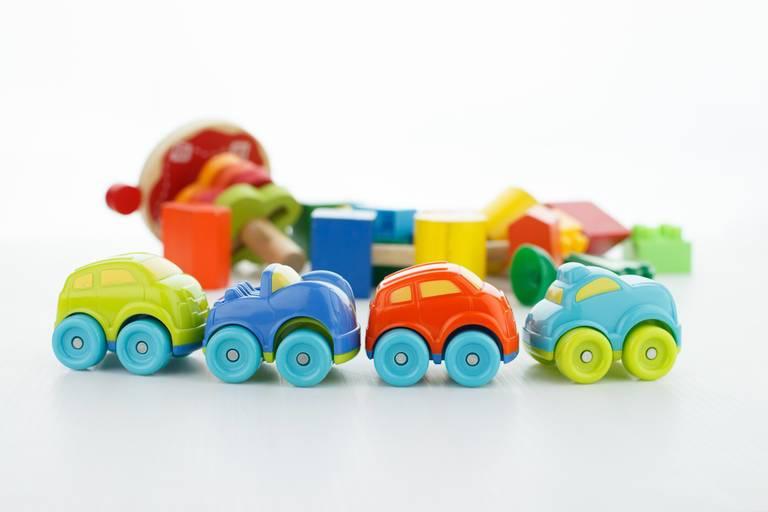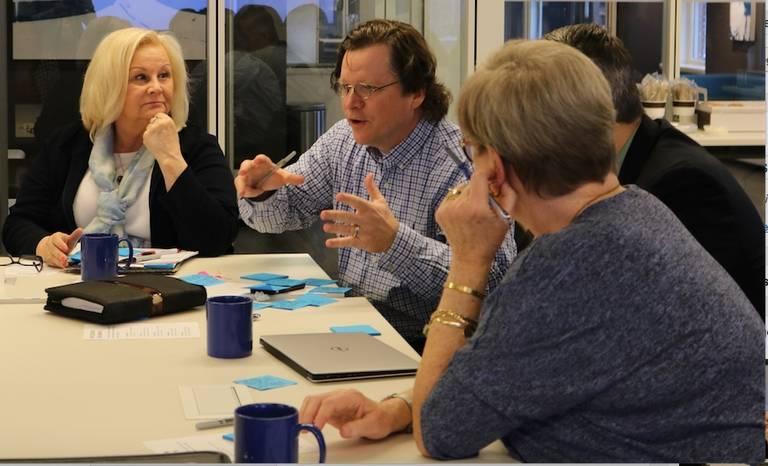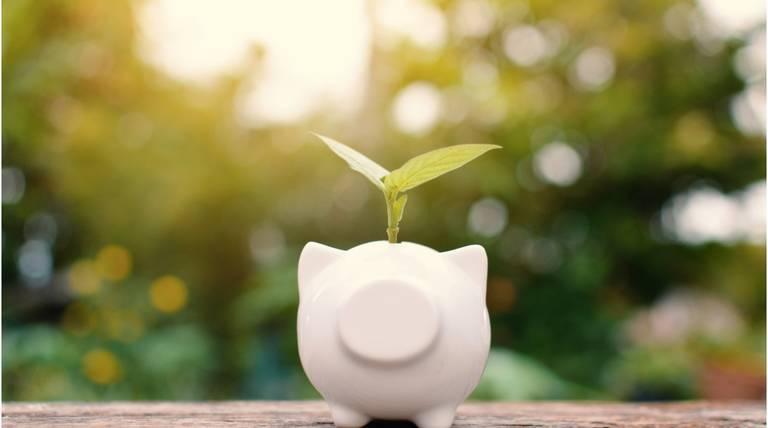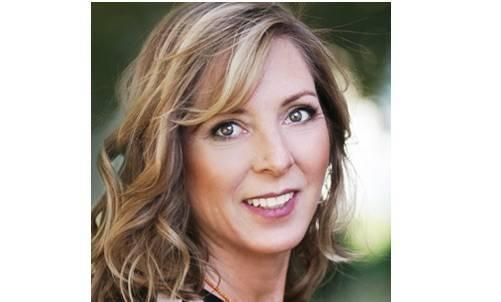We Survived Climate Change Eons Ago, but Could We Survive Today? Not Unless We Act Much More Swiftly Immediately


A compelling ad for The Great Course on investing shows a man's hands grasping a giant golden egg. It reminds me of the ever-present effort to learn from the past. Yet, with climate change, have we learned valuable ancient lessons or are we doomed to repeat past mistakes?
We humans survived an abrupt shift in the climate to bitter cold conditions 11,000 years ago and, in brilliant pictographs, Egyptian pharaohs related how they survived epic drought. Paleontologists and anthropologists find in the historic record of bones, household implements and living quarters that abrupt and harsh changes in climate over decades forced populations to move to survive. These climate disruptions also triggered population crashes and cultural changes.
Researchers speak of the intrepid prehistoric humans the way we speak of today's preppers: "These hunter-gatherers had a lot of skills and knowledge of how to use the natural resources. They could make shelters and houses and hunt, fish and collect plant materials." Some at a well-researched site in northern England practiced and endured enough resilience that they did not have to abandon their homes or significantly change their way of life. A certain deer species appears to have been the primary food and clothing source that enabled them to withstand the cold.
Advanced Planning
Researchers also discovered that ancient civilizations planned for and promulgated policies - including cross-breeding animals to make them drought-tolerant and moving their agricultural heartlands to more verdant areas - to withstand a hundred-year drought. They were able to help their neighboring former enemies to prevent the worst of a famine. Still, we cannot know exactly how prehistoric and ancient humans persevered.
Several researchers think a major key to their survival was that for generations, they survived climate shifts. It had become a part of their lives so they recognized signs of change and prepared to help their communities survive.
By contrast, we have experienced many centuries of fairly stable climate. We not only are out of practice employing resilience to these extremes, but it appears we're devoid of imagination as a society for what we ourselves have wrought and must do to prepare.
Today, climate disruptions definitely impact us. Consider:
" Health: Asthma cases have risen dramatically. Between 2001 and 2009, the number of patients diagnosed with asthma rose by 4.3 million, according to CDC reports. It is a leading cause of school absences across the country.
" Quality of Life: Extreme heat was the leading cause of weather-related deaths - more than 1,200 - in the U.S. between 2004 and 2013. The extraordinary heat wave that killed some 70,000 people in Europe in 2003 should have been a once-in 500-year event. At the current level of global warming, it has become a once-in-40-year event.
" Housing: Hurricane Irma destroyed one-of-every four homes in parts of Florida while over half of residential and commercial properties in the Houston metro are now considered at "High" or "Moderate" risk of flooding.
Like those ancient peoples, we have the perfect storm of events. They grappled with earthquakes, climate disruption and, consequently, invading neighbors. We confront earthquakes, deep societal inequities and pressing issues of a changing climate.
So, here is where we are at in terms of adapting to climate change. The assessment reflects a study of 100 Adaptation projects and leaders that I conducted with Dr. Susanne Moser and other researchers in 2017, funded by the Kresge Foundation
The positive view:
Some adaptation practices are underway and climate impacts are driving them. New actors and networks have energized the adaptation field, including such city networks as the Urban Sustainability Directors Network and 100 Resilient Cities. Adaptation also improves in certain areas: the adaptation knowledge base and increasingly available tools supporting adaptation. In addition, science and practice work together more frequently as leaders experiment with adaptation.
The negative view:
Driven largely by crises, the adaptation field is not creating a unifying vision/creative imagination for a future where people adapt and thrive. Adaptation remains mostly reactive rather than proactive. A sense of urgency is missing, and too many adaptation efforts are stalled at the planning stage. The prevailing emphasis on urban adaptation leaves small towns and rural areas behind and neglects important interdependencies between cities and surrounding areas. And while awareness grows as to the disproportionate impact of climate change on the most vulnerable-and the need for equitable solutions-few adaptation actors grasp how to incorporate equity into their work.
The future:
To avoid becoming the culture that fails, even in comparison with than prehistorical and ancient civilizations that survived climatic changes, we must accelerate mitigation and adaptation efforts significantly while building social cohesion and equity. This will close the yawning chasm through which we could fall. Today, the planet's average surface temperature has risen about 2.0 degrees Fahrenheit since the late 19th century, and models predict it may rise by tens of degrees - indeed, 30 degrees Fahrenheit in some places - by century's end.
We must strive to prevent, minimize, and alleviate climate change threats to human well-being and to the natural and built systems on which humans depend. It will prove exciting to fulfill this mission because by doing so, we create fresh opportunities to address the causes and consequences of climate change in ways that solve related social, environmental and economic problems.
But to achieve this, we must expand the number and type of leaders involved in helping communities adapt. Increase our capacity and tools of persuasion to make adaptation work more impactful. Ensure that the funds spent and policies enacted are in line with achieving this mission.
Egyptologists who study that empire's collapse caution that when leadership "has feet of clay and isn't willing to take the challenge on in an innovative way, then often the challenge will overcome them."Today in our democracy, that leadership lies with all of us. We must create transformative change. And be brave and uncomfortable in embracing the challenges of both social inequity and climate uncertainty as we do so.
Pray that in the timelines of geology, climate and human history, we can pivot from a relatively stable climate to one that mirrors nothing humans have experienced historically. Our survival in the new era of climate change depends on it.
Joyce E. Coffee, president of Climate Resilience Consulting and a Senior Sustainability Fellow at the Global Institute of Sustainability (GIOS) is recognized globally for thought leadership in climate adaptation and strategies for improving corporate and government resilience.
Over 100 Walmart Locations to Have EV Chargers by Next Year


It’s been said time and again that when companies plan their corporate responsibility strategies, the place to start is with their core competencies, as well as their products and services.
That may be true; but as they say in real estate, “location, location, location” can help on this front, too. Or at least that is in the case of
Electrify America, a coalition that says it is investing at least $2 billion over the next 10 years in Zero Emission Vehicle (ZEV) infrastructure, electric vehicle education and increased access to EVs. The organization announced yesterday that it will install the electric vehicle chargers at these Walmart locations across 34 states by June 2019. The results will double the number of EV charging stations at Walmart stores across the U.S.
To the most passionate advocates of EVs, this EV charging network may be a drop in the bucket considering Walmart’s reach – after all, the retailer boasts over 5,000 locations across the U.S. alone.
Nevertheless, this announcement sends three important signals, all of which are in alignment with Electrify America’s goals and that of its allies.
First, the Walmart partnership demonstrates that the business community has become more confident in the future of EVs – important considering the “brick wall” into which Tesla, the most visible electric car manufacturer worldwide, has slammed over the past several weeks. Whether Tesla recovers or not, automakers worldwide are still betting more chips on EVs, so it behooves retailers such as Walmart to devote a few spaces to these chargers.
Second, this investment shows that sooner rather than later, EVs will become far more accessible. Sure, other retailers are quick to tout their EV charging street cred, but they are usually companies like Whole Foods (too expensive and hipster for many families) or Costco (exclusive in its own right as it charges customers an annual membership). EVs manufacturers need to prove to the masses that they are just not for the Silicon Valley or early adopter types. Breaking down the accessibility and exclusivity barriers will help burnish EVs’ reputation as a vehicle of choice suitable for anyone. Of course, improvements in battery technology and the correlating drop in price are critical to the long-term success of EVs – but showing that they can be for the everyday man and woman means these cars need to start rolling up in places like Wamart.
Finally, consumers need to see evidence that EV technology, from these cars’ design and performance, to the convenience of these charging stations, is rapidly changing – and for the better. To that end, Electrify America claims that these charging systems to be located at Walmart stores will offer what it says are “the first-ever certified cooled-cable 150 to 350 kilowatt (kW) DC Fast Chargers.”
These vehicle chargers, says Electrify America, will deliver energy for up to 20 miles of range per minute, which is seven times faster than most current 50kW DC chargers.
“Along with providing our customers with an enhanced shopping experience through added convenience, this initiative also allows us to contribute to the expansion of our nation’s EV charging station infrastructure,” said Mark Vanderhelm, Vice President of Energy for Walmart, in a public statement. “Providing this service is the right thing to do for our customers, our business, and the environment.”
We don’t know if these EV charging stations will provide any “enhanced shopping experience.” But what we do know is that EVs are fast becoming attainable, not just aspirational – and yesterday’s move by Walmart is a notable step in that direction.
Image credit: Electrify America
How Toy Giants Hasbro and Mattel Match Up on CR


How do corporate responsibility and public reputation impact a company’s stock performance? A look at the recent history of Hasbro and Mattel provides anecdotal evidence that CR does support strong stock performance — but only if the company is effective in focusing and promoting its CR actions.
In an exclusive email interview with CR Magazine, JohnWeiss, Director of Ceres’ Company Network, offers this insight:
While it’s always difficult to show causation, there is some evidence of a connection between environmental and social performance and strong management systems, which is a factor in a company’s stock price. Some companies that outperform on environmental and social issues — that is, they’re effectively managing risk — also benefit from a lower cost of capital, which can contribute to a better stock price. I think we can expect to see more people studying this question in the years ahead, and developing even more robust conclusions, as the data set continues to grow and covers an increasingly long period of corporate performance.
Both Hasbro and Mattel have made a credible effort on key CR issues in recent years, including environmental issues. One main point of contrast, though, is that Hasbro has been more successful at integrating corporate citizenship with its public image.
Coincidentally or not, Hasbro is widely considered the “gold standard” in toy manufacturing, and despite a selloff last year it continues to outperform Mattel by a wide margin. As of this writing Hasbro stock is trading at about $95, compared to about $16 for Mattel. Rumors of merger are currently flying.
Hasbro and Mattel: Checking off the CR Boxes
On the surface, Hasbro and Mattel appear to have similar CR profiles, and both have been awarded for their efforts.
Most recently, CR Magazine recognized Hasbro with the #1 spot on its “100 Best Corporate Citizens List for 2017.” The award marked Hasbro’s sixth straight year of appearing on the list. Mattel also earned a spot on the 2017 list. However, it ranked much lower on the scale, at #56.
It’s All About The Environment Now Without digging too deeply into the 100 Best Corporate Citizens List methodology, a review of the CR histories of Hasbro and Mattel provides some clues as to why they are so far apart in the rankings.
Hasbro traces the birth of its CR record to the establishment of the Hasbro Charitable Trust in 1983, charged with “improving the lives of children and their families around the world.”
By 1993 the company realized that handing off CR duties to an independent foundation has its limits. That year the company adopted supply chain standards under the banner of “Hasbro Global Ethics Principles,” following up with the Hasbro Environmental Principles in 1994.
In 2002 Hasbro earned charter member status in the Climate Leaders initiative launched by the U.S. Environmental Protection Agency (EPA). Since then, the majority of its CR highlights have focused on the environment.
Mattel is also an early CR adopter. The company established a charity in 1978 and, like Hasbro, soon realized that integrating CR into its corporate culture was a more effective strategy. Mattel drew up its own Global Manufacturing Principles in 1997 and issued its first CR report in 2004.
The main difference between the two companies’ approaches is Hasbro’s more assertive pursuit of environmental and supply chain improvement. That contrast came into sharp focus in 2007, when Mattel drew a storm of negative press — and $2.3 million in civil penalties — over hundreds of thousands of toys contaminated with lead paint, originating from its overseas factories. By 2011 Mattel recovered with a more robust oversight program, but just a few years later it stumbled into an ongoing dispute with the organization China Labor Watch over conditions at its factories.
Meanwhile, Hasbro has been leveraging its relationship with the EPA to garner a regular stream of favorable publicity over its environmental actions.
In 2015 the company became a member of the EPA’s Green Power Partnership in recognition of its renewable energy certificates (REC) purchases. Aside from the environmental benefit, the REC program enabled Hasbro to publicize its support for the U.S. wind industry:
Hasbro purchased 9,319 megawatt-hours of Green-e Energy Certified RECs, which represents 100 percent of its U.S. electricity consumption in 2014. This REC purchase supports U.S. wind power and will avoid GHG emissions equal to growing 164,767 trees for 10 years.
The EPA relationship also enabled Hasbro to stakeout a leading position in the emerging climate action movement:
Hasbro’s renewable purchase qualifies the company for the U.S. EPA’s Green Power Leadership Club, a distinction given to organizations that have significantly exceeded the U.S. EPA’s minimum purchase requirements. Green Power Leadership Club members must purchase ten times the partnership’s minimum requirement organization-wide.
Last summer, Hasbro built on its U.S. track record to pledge 100 percent renewable energy across its global operations, including REC’s and the purchase of carbon offsets.
Talking the Talk Hasbro topped it off its run of good publicity by earning a longform interview in Newsweek in December 2017, under the headline, “At Hasbro, sustainability is essential to child’s play.”
The interview enabled Kathryn Belliveau, Hasbro’s Senior VP for Global Government, Regulatory Affairs and Corporate Social Responsibility, to lay out the company’s environmental actions for Newsweek’s large audience of general readers.
With the strategic focus on environmental issues, Belliveau was able to deploy key words and language that are coming into the public vernacular, such as “environmentally friendly design,” “environmental footprint” and “design for end of life.”
A Hasbro-Mattel Mashup? In an interesting twist, last fall rumors surfaced that Hasbro was poised to acquire Mattel. The news died down for a few weeks, but as this article was being prepared, both companies’ stock spiked up and the speculation was rekindled.
Hasbro and Mattel were not available for comment in this article. However, with public consensus finally emerging on climate change and other critical environmental issues, it is apparent that Hasbro is speaking with a stronger voice, in a language that investors and the general public understand. If Hasbro does bring Mattel under the umbrella of its corporate culture, the pace of progress on CR issues could accelerate across the toy industry.
This article was originally published in CR Magazine
CEOs Transcend Politics and Transform Social Problems: Michigan’s Talent 2025


By Kate Isaacs and Fred Keller
Several high-profile moments in corporate social responsibility marked recent months. Blackrock CEO Larry Fink urged portfolio CEOs to create social value along with financial value. Amazon, Berkshire Hathaway, and J.P. Morgan announced a new, independent health care company that will remain “free from profit-making incentives”—leveraging their corporate reach to offer low cost medical care to millions. Ed Stack, CEO of Dick’s Sporting Goods permanently banned sales of assault-style weapons in company stores.
People are hungry for courageous corporate leadership. A recent APCO survey found that ninety percent of consumers expect brands to take a stand on issues affecting the world.
Beyond the big headlines, what can CEOs and their organizations do to really move the needle on complex, stubborn social problems: poverty and inequality, unemployment, health and healthcare inequities, and education disparities?
Talent 2025 Solves “Wicked” Complex Social Problems
A powerful answer comes from a small-city, semi-rural region of West Michigan, where more than 100 CEOs have been working together for many years to elevate the prosperity of their community, in this generation and beyond. Talent 2025 CEOs partner with stakeholders in their community, including education, workforce development, government, and non-profits to tackle complex social challenges that no one of them can solve alone.
#1 Increase Literacy of the Future Workforce
Talent 2025’s K-12 Barriers and Needs group believed elementary-level literacy would create positive ripple effects throughout a child’s education and translate into better talent prospects for local employers. But as Autocam Medical CEO John Kennedy put it, “We’re a bunch of CEOs. What do we know about education and literacy? Nothing.” So, they worked with directly with educators.
The group discovered a reading program yielding success in a few Michigan charter schools in poor districts. Kennedy’s family foundation funded a pilot, Sound Reading Framework, to train 50 teachers in three public schools. The outcomes were dramatic:
- In a 5-week summer school session, students’ reading improved by an average of 0.8 grade levels
- Two years in, students in all the pilot schools test in the high 30s to low 40s in reading proficiency – up in some cases from scores as low as six to seven percent
They now plan to scale the effort to more schools, supported by local funding sources.
Says Kennedy, “We won’t eliminate poverty, but we will dramatically improve the condition for all of the citizens in our area. And that is going to help make us a more competitive marketplace.”
#2 Increase Diversity within Organizations
Diversity, Equity and Inclusion emerged as a fundamental need to attract, retain and promote people of color to the talent market. The resulting DE&I initiative has 58 of the CEOs on board to commit to a company self-assessment and to build a strategy to transform their businesses. Nearly 400 people joined the first working session. With 12% of the workforce in the region represented by these CEOs, a “tipping point” is expected to accelerate the region toward its desired goal of being a draw for people of color.
#3 Build a Reliable Source for Talent Data
The K-12 Working group, led by the CEOs of Herman Miller, Autocam, and Trinity Health, sought to improve visibility of the local talent pool. Educators shared that training programs were being canceled because educators were using poor quality data about employer needs. For instance, educators believed regional demand for machine operators was declining when it was increasing.
The group now publishes an annual Talent Assessment and Outlook report on education and workforce development needs for West Michigan’s 1.6 million inhabitants and a dashboard of regional educational, employment, and labor force metrics. This democratizes and de-stigmatizes community issues by creating a common base for stakeholders to own problems.
Why Talent 2025 Works
1) Gets Key Players in the Room – And Out of Their Silos “We don’t delegate,” says Kevin Stotts, President of Talent 2025, “All the leaders on the topic are in the room—CEOs, nonprofit and government leaders, change agents and subject matter experts.”
2) Sets a Tone of Trust and Collaboration – These CEOs don’t swoop in with answers; they explore problems and ask “we” questions that encourage people to own problems together. Because their working group matches their passion, they show tremendous respect for the people working on the front lines.
3) Leans on Objective Data – Bringing in solid research on the regional issues that are larger than anyone’s ability to solve alone makes discussions more pragmatic and productive and sets aside politics.
4) Develops Root Cause, Systemic Solutions – Many community change efforts are slow and inefficient, an endless studying of a problem rather than real change. Talent 2025 identifies the root cause and sets very specific goals to solve.
5) Applies Continuous Improvement – They continually evaluate efficacy of solutions and adjust accordingly.
Initiatives like Talent 2025 let CEOs do what they do well: convene partners and act as change agents. Their work yields better talent prospects, profound personal satisfaction, and greater health, and prosperity for their fellow citizens.
Fred Keller is chair and founder of Cascade Engineering, one of the largest certified B Corps in the world.
Dr. Kate Isaacs is an Executive Fellow at the Center for Higher Ambition Leadership and a Research Fellow at the MIT Sloan Leadership Center.
Photo: Talent 2025
Banks that Address Climate Change to Get $20 Million in Grant Support


One of the world’s biggest charitable foundations is setting aside millions of dollars to kick-start bank investment to halt climate change.
A philanthropic portfolio of up to $20m (£14m, €16m) a year for five years has been established for climate change work in the finance field by the William and Flora Hewlett Foundation, often known simply as the Hewlett Foundation, an organization formed in 1966 by the co-founder of the Hewlett-Packard IT group, his wife and their eldest son to promote a better world.
From this, $1m is now being offered in grants this year for conducting projects to persuade business and consumer savers in the retail banking sector and the banks themselves to respect environmental principles when investing. The Foundation is accepting Requests for Proposals through May 1. More grants from the foundation are likely to follow.
For example, the banks could be encouraged to divest from fossil fuel industries and invest instead in climate change mitigation solutions, such as solar and wind energy.
Individual account holders could think similarly when placing their money and could favor banks that invest sustainably.
The funds available globally in checking and savings accounts are monumentally large. Particularly rich pickings are found in the US, where $12tn is held in these accounts, and in India, where the figure is $1tn.
The foundation itself has a kitty of $9bn and its overall climate change effort amounts to a spending of up to £600m over five years. It hopes the retail banking sector will help to provide the $1tn needed globally and annually to meet the Paris Climate Accord by 2050.
Marilyn Waite, a program officer with the foundation’s environment program, illustrates the ethical relevance of the target vividly.
She warns: “It’s hard to think about solving the pressing challenges of today without thinking about climate change, something that affects everyone on Earth and permeates our economy.
“Some of our most important economic hubs are also coastal cities, so whether it’s New York in the US or Shanghai in China, these locations are at risk of sea level rise because of climate change.
“Impacts, such as extreme drought, coastal flooding and more intense and more frequent extreme weather events such as hurricanes, are being linked to changes in our macro-climate. These are all putting our real physical assets, and therefore our livelihoods, and everything else that surrounds them, at risk.
“Worse, climate change is risking millions of human lives, particularly in these coastal cities.”
Photo: William and Flora Hewlett Foundation/Sawitree Pamee / EyeEm via Getty Images
Is Your Organisation Fulfilling Its Duty of Care?
The International SOS Foundation announces its Global Duty of Care Summit, taking place in Chicago on 17 May 2018. Speakers will include security, healthcare and compliance leaders from American Airlines, Chubb, Everbridge, GoDaddy, Harris Corporation, Hostage US, Johnson & Johnson, Walgreen Company, Walt Disney Parks & Resorts, The World Bank Group, KPMG and the Association of Corporate Travel Executives (ACTE).
Now in its second year, this one-day business conference is tailored specifically for stakeholders involved in mitigating health and travel security risks of a mobile workforce. The 2018 agenda, based around the theme of Empowering Sustainability and Resilience, will address key issues in managing global mobility programmes. This includes issues such as the gig economy, data privacy, geopolitical influences and wellbeing.
Laurent Fourier, Director of the International SOS Foundation, comments, 'The participation of industry leaders from around the globe at the Summit will provide access to a wealth of expertise and insight. Our focus is sharply on today’s key issues in Duty of Care, in order to keep the workforce safe and protect business continuity and sustainability. The collaborative environment will provide the opportunity for a high level of engagement between all speakers and delegates. With the benefit of the best practice insight and practical advice at the Summit, we strive to enable organisations worldwide to be empowered to improve their own processes and programmes for sustainability and resilience.'
Chubb, the world’s largest publicly traded property & casualty insurance company, is the Gold sponsor of the Duty of Care Summit & Awards. James Walloga, Executive Vice President of the Accident & Health North America Division at Chubb, says, 'We recognise the principles underlying Duty of Care are rapidly becoming top of mind for senior executives and risk managers. Now, more than ever, it is important for organisations to take a proactive approach toward implementing best practices to deliver on their Duty of Care obligations. It is not only a matter of compliance, but a critical component of successful business performance. We are excited to help drive this agenda forward.'
The Summit will be followed by the 2018 Duty of Care Awards ceremony, recognising organisations and individuals who drive excellence in the mitigation of travel, health and security risk and contribute to effectively protecting workers overseas.
For more information on the 2018 Duty of Care Summit and speaker profiles, click here.
To secure tickets for this exclusive Summit at the special Early Bird price of $589, or $749 for a Summit and Gala Awards Dinner ticket, go to
https://2018_duty_of_care_awards_summit.eventbrite.co.uk.
About International SOS Foundation
Established in 2011, the International SOS Foundation ― Ambassadors for Duty of Care www.internationalsosfoundation.org – has the goal of improving the safety, security, health and welfare of people working abroad or on remote assignments through the study, understanding and mitigation of potential risks. The escalation of globalisation has enabled more individuals to work across borders and in unfamiliar environments; exposure to risks which can impact personal health, security and safety increases along with travel.
The Foundation is a registered charity and was started with a grant from International SOS. It is a fully independent, non-profit organisation. For more information on Duty of Care and the International SOS Foundation, please visit http://www.internationalsosfoundation.org/
Notes to Editors
1To learn more about the 2018 Duty of Care Awards, click here.
For further information, contact: Suzanne Withers, Head of Group PR, International SOS, T: 0208 762 8494, E: [email protected]
Corporate Political Activism: What Corporate Responsibility Directors Need to Know


Social and political events of today are forcing many businesses to rethink their role in corporate social responsibility. For many years, the idea of taking a stand on a contentious political topic was off limits and risky at best for companies. Staying neutral and focused on brand and products was considered the responsible way to do business.
But today, consumers often want to know your brand’s position on current issues, says Daniel Korschun, Stephen Cozen Research Scholar and associate professor, Drexel University. And they are motivated when you are willing to speak out.
Korschun, who focuses on corporate responsibility and brand and corporate reputation management, was a guest on 3BL’s recent webinar, Corporate Political Activism: What Corporate Responsibility Directors Need to Know.
The April 10 webinar was sponsored by Corporate Responsibility Association and was chaired by Maureen Kline, vice president of public affairs and sustainability for Pirelli Tire, and John Friedman, sustainability manager at WGL.The prevailing wisdom, said Korschun, has always be that companies should remain neutral when controversial issues come up in the media. And in the past, that point of view served big corporations well.
But events in the last couple of years have demonstrated that the consumer’s expectations for companies is changing. Corporate involvement in movements like the WeAreStillIn campaign, which was endorsed by more than 900 businesses at the time of its launch, and the growing success of companies like Patagonia which kick-started a petition against the Trump administration’s effort to delist national monuments and parks were hallmarks to that changing attitude about how the “right way” companies should respond to political controversy.
Companies like Delta and Facebook, which have gone on record indicating that they would remain neutral in response to the Parkland, Fla. shooting and criticism against the National Rifle Association’s stance on the issue.
“That neutrality really backfired [on Delta]” said Korschun, who pointed out that while the company said it was distancing itself from the NRA by eliminating discounts to its members, the company was perceived as having conflicting views and actually taking a stand against the NRA.
He said this same conflicting message was heard by consumers when Dick’s Sporting Goods announced they would stop selling assault-style rifles.
"When they announced it, they announced as a way to stay away from the issue, noting that ‘we don’t want to be part of this story.’”
Since that time, Dick’s Sporting Goods has changed its message, with a press release stating that it supports more advocacy on the part of the gun manufacturer, Vista Outdoors, and is taking a stand against neutrality. Its current position has been mirrored by other outdoor sporting goods stores in the U.S. and Canada. Those stores have also recorded positive feedback from their customers for taking a decisive position on the unrestricted availability of assault-style rifles.
Political events and increasing polarization of consumer views are leading companies to realize that it’s no longer OK to try to evade taking a stand, said Korschun.
“The large overarching theme in my research is this is a new reality and for most of us in the CR field, it’s time to embrace this new reality.”
In fact new research into consumer buying trends suggest that some customers will be more apt to make incidental purchases if they know the store is a “value-oriented” company and consistently lives up to its values. According to Korschun, 22.9 percent of consumers in a recent survey said they made an unplanned purchase after learning the company they were about to visit acts on its values and had taken a position on a controversial, local issue. For other companies that were viewed as values-oriented but had chosen to abstain from taking a stand, the number of incidental purchases plummeted to 16.3 percent.
“Even people who disagreed with the stand … still make more purchases from the store.” And the reason for this, he said, is that “people find a values-oriented company that does not take a stand, that abstains, to be hypocritical.”
Korschun shared a number of tips that CR managers can use to determine the best approach to corporate responsibility for their companies, each reflecting new research about the way that consumers tend to view corporate advocacy in today’s marketplace:
- How advocacy at the point of purchase can be beneficial to your brand;
- Ways that companies can measure the anticipated response from consumers given your values-oriented approach;
- Lessons CR managers can gain from companies that are now shifting their approach toward advocacy and the benefit they are reaping from that change.
Korschun’s research has been published in more than a dozen journals around the world, including the Journal of Business Ethics, MIT-Sloan Management Review and the International Marketing Review. He is also the author of two books, Leveraging Corporate Responsibility: The Stakeholder Route to Maximizing Business and Social Value (Cambridge Univ. Press, 2011); and We are Market Basket: The Story of the Unlikely Grassroots Movement That Saved a Beloved Business (AMACOM, 2015).
Content like this is typically reserved for Corporate Responsibility Association members. To experience a preview of our thought leadership content, watch Dr. Korschun's presentation in its entirety here.
Image credit: ScreenshotNo Sun? No Problem! Solar Power Now Comes With Insurance


When President Trump slapped a stiff 30% tariff on imported solar modules earlier this year, there were warnings of a steep price hike resulting in thousands of job losses in the solar power field, and a deep malaise in the US solar industry. That hasn't quite happened. Instead, there are signs that the US solar industry is on the cusp of a new wave of growth. One of those signs is a new insurance instrument called a Solar Revenue Put that will help drive costs down, tariff or not.
New Solar Revenue Put lowers solar power risk
Weather-related risk used to be a main point of contention for solar power nay sayers. After all, your solar panels are useless when the sun doesn't shine.
That's actually not so much of a problem any more in terms of supply, considering recent improvements in energy storage and smart grid technology.
The real concern now is the risk to investors. When your solar farm is not making hay, you're not making money.
One solution is to offer solar power investors insurance against the weather.
Last week, Bloomberg reported on one such financial instrument, created by the solar risk management company kWh Analytics.
kWh describes the problem like this:
Solar assets are under-leveragedBanks offer less debt(cheapest capital) because of performance risk
Sponsors are forced to commit more equity (expensive capital)
And, this is the Solar Revenue Put solution:
A guarantee that banks can trustBloomberg provides this snapshot of the arrangement:Brand-name, investment-grade insurance carriers guarantee that solar assets will perform
Banks get comfortable lending more money to solar assets
The product that at least one insurance company is now offering is called a solar revenue put. It was developed by risk-management software firm KWh Analytics and can guarantee as much as 95 percent of a solar farm’s expected output, according an email the company sent to clients Tuesday. Swiss Re has now sold one for three Virginia projects.
Aside from weather risks, the 10-year policy also covers shortfalls related to flaws or failures related to construction of the solar farm, including the solar panels and inverters.
The prospect of a guaranteed revenue stream for solar power is attractive on its own, but there is a larger goal in mind. With the solar put in hand, solar developers can go to lenders with a demonstration of certainty. That low-risk factor can help drive down the cost of borrowing.
The result is a win-win that could stimulate more capital flowing into the solar field, which is a critical goal for solar advocates.
The solar put: how it works
kWh Analytics uses its own software and database to predict output from a proposed solar farm. Its resources are formidable:
kWh Analytics was uniquely positioned to create this product because it owns and manages the industry’s largest asset performance database( 20% of the U.S. market). This data enables kWh Analytics to accurately assess and price performance risk.
Based on the kWh information platform, the policy sets a floor on the electricity it generates. Any shortfall is covered by the insurance policy.
As reported by Bloomberg, the solar put would cost about 1 percent of the revenue from the solar farm, but it enables developers to borrow more money in addition to getting a lower rate. In other words, the solar put could pay for itself.
As for impacts across the board, kWh Analytics notes that the cost of capital is "the biggest single cost of a solar power plant." The company estimates that by shrinking the proportion of debt, the Solar Revenue Put could result in an overall cost decrease of up to 5 cents per Watt.
Five cents might sound like peanuts, but when you're talking megawatts the numbers add up.
kWh also notes that a 5-cent price drop would compensate for fully half of the 10-cent increase that analysts anticipated as fallout from the first year of the new solar tariff.
The company Coronal Energy is the first to dive into the new product. Keep an eye on them -- they're in an exclusive partnership with Panasonic, and Panasonic is an industry partner in a cutting edge PV research consortium aimed at bringing low cost perovskite technology to the market.
The solar tariff killed solar jobs...not!
Speaking of the new solar tariff, the worst damage appears to have occurred last year, when Trump was publicly mulling whether or not to impose a tariff.
That uncertainty likely contributed to a downturn in solar jobs in 2017, coming off the peak employment year of 2016.
On the other hand, the threat of a tariff gave solar companies ample time to stockpile solar panels at the lower rate, helping to cushion the blow for customers.
The end result, so far, has been more smoke than fire. Solar jobs are reportedly on track to recover back to their record-breaking 2016 level, and possibly slip past it into positive territory.
Looking forward to the next few years, solar costs are already set to tumble. The solar tariff is designed to ratchet down to nothing in four years, and some companies have applied for -- and may win -- an exemption. Innovations in the photovoltaic field will also drive costs down.
Just one caveat: state-level policies can still make or break solar job growth. For example, the South Carolina legislature recently killed a bill that would have enabled solar growth in the state, while New Jersey Governor Phil Murphy is ready to sign a bill that will double down on his state's renewable energy portfolio.
Image (screenshot): via Coronal Energy.
Putting Our Feminism Into Our Finances


By Kristin Hull
While many of us have been at this for a while now, 2018 is the year we stand to make significant progress in our efforts to bring more women into the financial fold. The #MeToo movement has brought attention to women’s equality everywhere from the red carpet in Hollywood to the executive suite and the board room on Wall Street. The more recent Oscar’s hashtag #HereWeAre is also serving to raise awareness of the importance of women’s voices being included and heard.
With national demonstrations of support including the Women’s March, and myriad celebrations of Women’s History Month as well as a growing body of research highlighting the business case for diverse leadership, those of us looking to change the face of finance have some strong winds in our sails.
From wealth advisors and fund managers, to start up entrepreneurs, to company leadership at the board and executive levels, intuitively we have long known the need for greater diversity within the financial industry. The research is now stacking up pointing to the many and varied benefits for companies, and their investors, that embrace inclusivity. With findings that diverse teams are more innovative (leading to increased revenue generation) and that companies with women in leadership perform better during times of financial uncertainty, we are well on our way to making a strong financial case for inclusion. Additionally, many large firms are recognizing the gender pay gap and that it is in their best interest to close the gap. The news of these efforts strengthens the movement for equality.
This past year has seen record numbers of women (and men alike) gathering to march in the streets to protest the White House, gun violence and use of fossil fuels as well as to speak out for fair treatment of women around the globe. May this also be the year we use our finances as a lever for social change in support of feminist values.
Now is the time to invest with a gender lens. From our consumer activity to our investment portfolio, it is time to align our assets with our goals for gender equity. Each one of our dollars has an impact in the world, from our banking decisions, to our bond and public equity holdings. Let us continue to put our feminism into our finances to ensure that our money is having the impact we are hoping to see in the world.
What does it mean to invest with feminist values?
Here are a few ways to ensure we are leveraging and aligning our portfolios with a gender lens:
• Do all of your companies include women in leadership? There is need for greater diversity at the board and executive leadership in all sizes of companies. Up until recently the onus has been on women to prove that inclusion is a good business proposition. Nowadays, instead of seeing women as a risk factor, the tide is turning toward viewing inclusion as a competitive advantage. Moving forward in this age of inclusion, I believe the burden will move toward men to justify an all-male leadership team. In the meantime, we can send a strong message by voting with our dollars. At Nia, we select only those companies that include women in leadership. We also use our platform and our investor voice to share the accumulating research on women in corporate leadership, encouraging some of our companies to increase their gender diversity numbers.
• Are your investments providing women access to capital? Financial inclusion is a significant part of how we will achieve gender equity. Currently, women receive only 4 percent of venture capital funding. As investors, we all need to check our biases to ensure we are directing capital to women, and not missing opportunities by inadvertently excluding this half of our population of startup businesses. Is your bank providing loans to women entrepreneurs? Are the lending companies in your portfolio on board to lend to women and women owned businesses? Have you checked out Investibule? This new investment platform highlights crowd funding investment opportunities for women entrepreneurs.
• Are the companies in your portfolio producing products and services beneficial to women and girls? It is said that companies with women in charge hire more women. This is a good thing. While leadership opportunities are essential for both a company’s financial bottom line as well as broader inclusion goals, as investors and advisors, it is also important to select companies that have women in mind. To transition to the next, just, sustainable and inclusive economy, those companies that are actively innovating on behalf of women and girls need our investment. From avoiding harmful companies to investing in solutions-focused companies such as those addressing renewable energy, affordable housing and health care solutions, we can use our investment portfolio to invest in a world that works for everyone.
• When evaluating companies in which to invest, company employment policies matter. Are you investing in companies with generous family leave, making it easier for women to excel at their career while also raising a family? Do the companies in your portfolio have diversity goals, as well as policies and practices in place to help them achieve their missions?
Kristin Hull is Founder and CEO, Nia Impact Capital
Originally published on Green Money Journal and distributed by 3BL Media.
The Opioid Crisis: Taking Action in the Private Sector


By Roger Krone
The conversation around solving America’s opioid problem is centered on public policy, but the private sector holds considerable levers of power. In October, President Trump declared a public health emergency. He stated that ending the opioid crisis will require the resolve of our entire nation, including the “mobilization of government, local communities, and private organizations.”
Unfortunately, we have not yet seen significant mobilization in the private sector. As we know, there’s a lot of work to do. The scale and urgency of the opioid epidemic are alarming. Many experts believe it is the worst drug crisis in U.S. history. Drug overdose claimed at least 64,000 lives last year, making it the leading cause of unintentional death in our country. More Americans died last year from drug overdose than the number of U.S. soldiers we lost in Vietnam. Millions more suffer from non-fatal opioid use disorder, and countless more will suffer if trends continue.
Improving these numbers will require our nation’s business leaders to respond. First, through awareness. Awareness and prevention are deeply intertwined, and open dialog is required to make progress. Many Americans are not tuned into the issue, but we should all understand how our communities are suffering. I urge my fellow business leaders to offer forums for our employees to talk openly, and foster workplace environments in which they feel comfortable seeking help. We should arm them with the information they need to make good decisions regarding the safe use of prescription opioids.
Unlike federal and state government, private businesses can mobilize resources quickly. We can initiate response efforts through volunteerism, and divert charitable dollars at our discretion, often with no structured granting process. This money can go toward sponsoring programs in the philanthropic community, funding public service advertisements, or partnering with academia.
We can also affect change on the treatment side by offering anonymous employee assistance programs, or altering prescription drug plans to increase access to non-addictive pain medication. Finally, we can harness American brain power, entrepreneurship, and innovation from the private sector to present new ideas and invent solutions.
At least to start, my company is pursuing these avenues through which change can be affected without the help of government. Other types of response may be possible, which is why we will continue to explore different ideas. If you’ve been affected by drug addiction, ask your company’s leadership to consider what steps they can take. In the absence of decisive action by government, the private sector must answer the call. I urge our nation’s business leaders to act quickly.
Roger Krone is Chairman and CEO of Leidos, Inc., a Fortune 500® information technology, engineering, and science company based in Reston, Va.
This article was originally published in CR Magazine